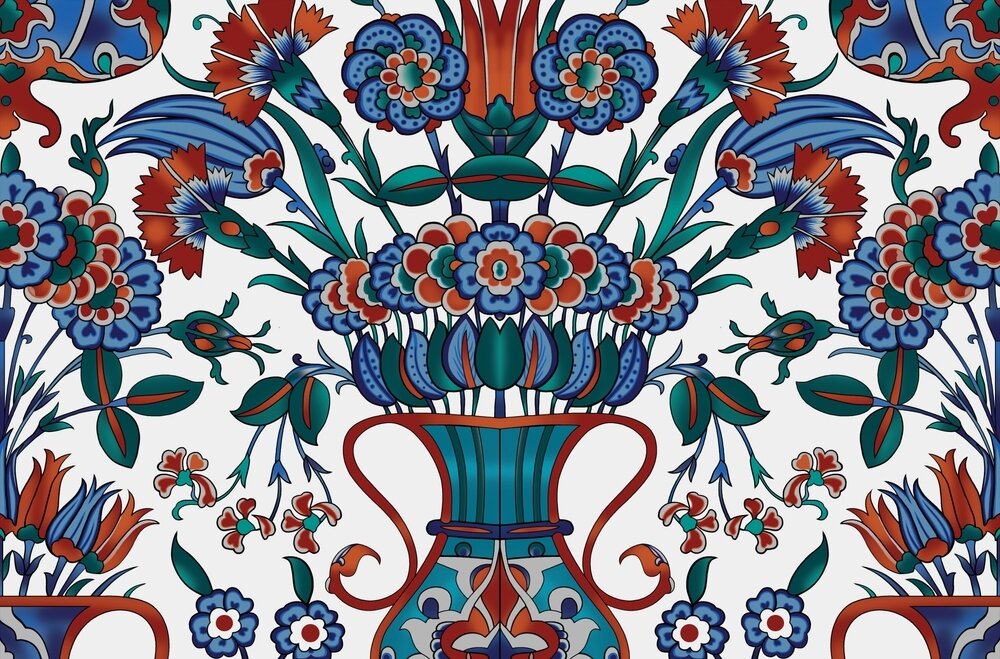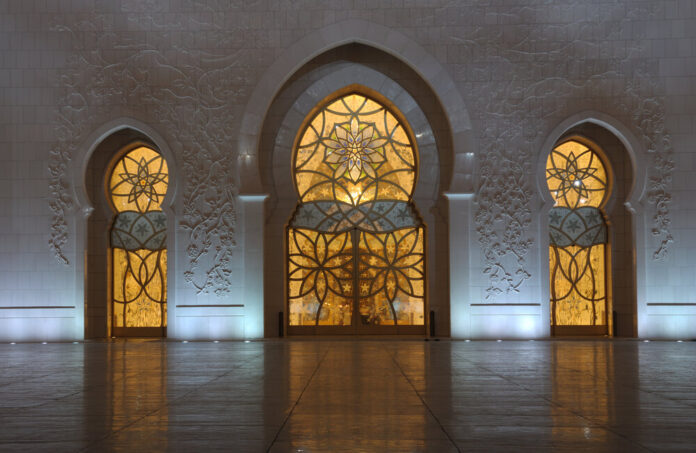The impact of Islam on the world of art is profound and far-reaching, with a rich and diverse artistic tradition that spans over 1,400 years. European cities in the south and east, and on the north African coast, have been left with architectural influences, works of art, and culinary cultures, which are all the result of Ottoman and Moorish hands covering the area at certain points in history.
As you wander around these cities, you will start to see those influences everywhere you look. Over the years they have been taken and adapted to suit changing periods of time, generation, history, and technology.
We’ve highlighted some of the most evocative ways in which Islam eases the soul aesthetically.
Blue tiles incorporating tulips and arabesque designs
The intricate geometric patterns and arabesque designs are found widely in architecture, ceramics, textiles, and manuscripts and serve as a reflection of the Islamic belief in the infinite nature of God. In many of the designs, you will find tulips -flowers that symbolize abundance, prosperity, and perfection.
While tulips were first introduced to the Ottomans by the Persians back in the 16th century, they soon established their role as an important commodity. This spring flower is much celebrated during rabi al awwal, which is also known as the first spring in Arabic, and to give in this time to those less fortunate is much encouraged.
Introducing calligraphy – an ancient art form
The Arabic script, which is founded on Islamic calligraphy, especially the Kufic and Naskh styles, has been used to write verses from the Quran and other religious texts and produced as works of art that are much revered. Due to the importance of calligraphy to Islam, those who practice it are highly respected for their craft.
How Islam influenced architecture
Islamic architecture is perhaps the most visible and influential aspect of Islamic art the world over. Iconic buildings such as the Taj Mahal, the Alhambra in Granada, the Dome of Rock in Jerusalem, and the Citadel of Aleppo all demonstrate the inherent influence of Islam in terms of structure, design, and decoration. Islamic architecture often features intricate tilework, arches, and domes.

The art of creating illuminated scripts
Every religion has a great history and tradition of creating highly decorated manuscripts and books, and Islam is no different Islamic manuscripts are often adorned with colorful illustrations and intricate borders. These illuminated manuscripts contain religious texts, scientific treatises, and works of literature. They are a testament to the skill of Islamic artists and scribes.
Highly decorated ceramic tiles and potttery
Tiles, pottery, and ceramics featuring intricate geometric patterns, featuring plants, flowers, and animals as well as calligraphic inscriptions are widely used in historic cities where the historical impact of Islam has left its mark. The city of Iznik in Turkey, for example, is renowned for its production of Iznik tiles.
Textiles and carpets
Traditional textiles and carpets in Islamic countries tell stories within every stitch. Their intricate patterns and designs create a narrative that illustrates the lives and struggles of the people that made them. While many patterns have been copied by factory-made rugs, original carpets are works of art in their own right. Persian rugs, in particular, are celebrated for their quality and beauty. These textiles and carpets have been exported around the world and have influenced textile traditions in various regions.
Music and poetry – continuing the storytelling tradition
Music, though sometimes controversial in conservative interpretations of Islam, has a long history in various Islamic societies. Poetry, especially in Arabic and Persian, has produced some of the world’s most celebrated poets, such as Rumi and Hafez.

























